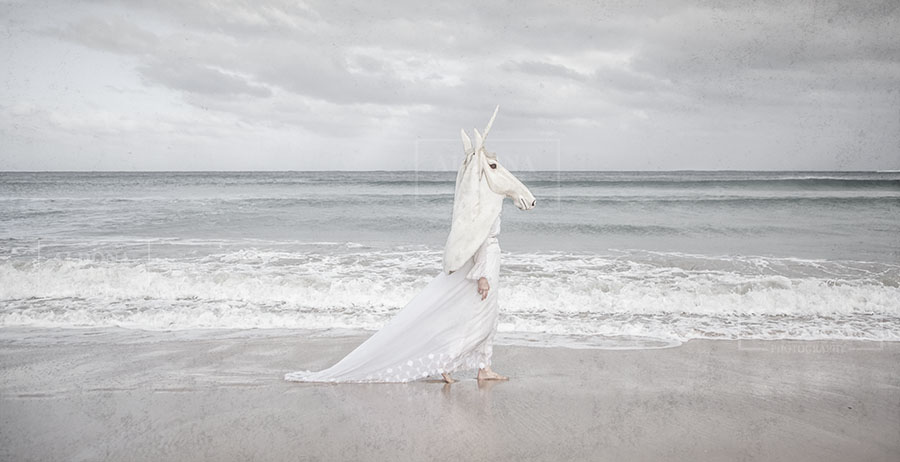What Is Creative Photography?
Creative photography is hard to explain. Why? Because creativity is very subjective and everyone’s imagination is different. I always know when I “feel” creative on the shoot or not. Creativity is explained as the act of turning imaginative ideas into reality and characterised by the ability to perceive the world around you in a new way, finding hidden patterns, connecting the dots, and making connections between seemingly unrelated phenomena. It’s about solving problems and finding solutions.
This post is about creative photography ideas based on some of my past photography and art projects and how you can utilise them in your own photography. It’s interesting to ask people what they perceive as creative or not. To some, an abstract and out-of-focus photo with shallow depth-of-field can be a “creative image”, while other people may consider it to be a reject, bad or a distracting photo. So, let’s talk about what creative photography is, at least for me and how you can capture creative images yourself.
Creative Photography Process
Creative photography should have an extra element (or elements) that are intentionally used to create/transform a photo from its original state into the next, which can be one of many creative techniques. Any photographic activity should start at a brief level or an idea level, a desire for something that you want to try and is followed by a subject research or brainstorming. That is how I work. It often happens that you find that inspiration while doing other things that are completely unrelated to photography but are stimulating, like going for a walk, reading a book, listening to a podcast or gardening. Once the seed of an idea is in your brain, our subconscious takes over and works ‘undercover’. Many of my artwork ideas emerged that way.
So, you should take time to figure out how you think about your process of arriving at a particular idea, your images as a result and find out what is your favourite creative process.

Creative Photography Techniques
Adding Extra Elements
Extra elements can be super exciting to add to your usual photographic process and are open to everyone’s individual interpretation. This is where being “creative” comes into play. Creative elements can involve a desire for fragmentation of an image, or creating a perception of a deeper, more dimensional photograph rather than 2D image. Cutting up a single image into many different pieces and moving them around can create a very unique look of a photo. Or they can be a complex post-processing technique that is used to bring out the mood and texture in an image. This unique portrait of a local Ballarat woman was created using a photo mosaic software to create thousands of small but unique images integrated into a main layer of an image. It is called a mosaic photo technique and it works best if you use a huge variety of different images, with varying textures, colours and subjects. It also demands a huge processing power and memory from your computer so make sure you’re working with the right equipment from the start. It can be a very rewarding process with an amazing photo outcome if you get this photography technique right. If you’d like to find our more details how I created the above artwork (it’s actual printed size is 170 x 120cm framed), please get in touch with me here. You can view the full Under the Floorboards mosaic art project here.
Using layers
The use of extra layers as photography elements can make your images really stand out and make them look almost painterly. As an example, let’s use my image titled “Unicorns are Real”, which was captured at Warrnambool beach in winter of August 2015, asking a friend of mine to model for me. Just getting the exposure right in the camera does not make a creative photo. However, intentionally under-saturating the photo that matches a cloudy grey sky for the purpose of creating a moody image that resembles painting does make it a creative photography. Also using symbolic objects, like the white paper mache unicorn head and directing the model to walk in a certain way to express the mood I wanted to capture, did match the idea I had in my mind for this creative Dreamscape series (here are more images from the series).
It’s all about the bigger picture.

Creative Photography & Composition
The composition in creative photography is important. You have definitely heard about the rule of thirds, or a notion of not placing your subject in the middle of a photo, which is what I mostly do! Check out the images within this post for examples of breaking some of these rules, creatively.
Developing a Creative feeling
So now that you’ve read and and seen what creative photography may mean, you can start make your own creative images. This is not an easy task though, just to let you know, because unlike the technical side of photography that can be mastered by following specific workflows, there are absolutely no clear workflows for being creative! This is all achieved by the right side of your brain, which deals with tasks that have do with creativity and the arts: thinking, imagination, making mistakes and discovery. This is what makes creative photography challenging. It’s also why many photographers find photography to be a lifelong learning experience. It varies so much and it takes time!
While you can quite easily master the technical side of photography, the creative side often requires you to come up with something new to accomplish your next goal and, sometimes, pushing yourself very hard. So now hopefully, you’re beginning to understand what a complex and vast topic creative photography really is and this is just the beginning.
While I can’t give you a step-by-step guide on how to ensure that your images are perceived as creative, I can tell you that for many photographers, switching off, closely observing the world and thinking outside of the box have proved to be essential for capturing creative photos. It’s just one of those things. The key is to try and understand how your mind works, how to explore your idea and how to continue to do things you’ve never done before just to find out what happens. I hope it makes sense to you? If not, let me explain my thought process further.

Creative Photography Ideas – use wide angle lens
If you’re shooting an animal, a cow like in the example below, but the cow is blending in a bit too much with the surrounding, not all of its markings and colours will stand out from the background. Of course, this does depend on the type of animal that you’re photographing, but if you wait for that perfect subject to interact with or show itself, you can capture some amazing images and the background will add to the image quality. Of course, this technique won’t always be able to be applied when you’re out and about shooting, but that was just an example. And if it is safe to position yourself closer to the animal, do it and experiment with various angles and wide angle lens as it has the potential to create a completely different look. Don’t settle for anything that’s too far away from what you’d intended.

So, when you’ve got the right subject, think about how you can improve your creative image and its composition further. Think about the use of the image: where is is going to feature, what do you want to do with it further? After the image have been taken and you’ve determined its purpose, you can remove distracting elements. Maybe that’ll be in the form of other animals or colours and patterns which don’t belong in the image or its intended use. Sometimes they work, sometimes they don’t. But you can be the judge of that and learn the difference. Although, sometimes having extra elements in a photograph make it better! So, let’s sum up this rodeo on creative photography:
In my experience, the creative process is often inspired by a specific event or a situation, and happens either out of frustration with the situation or a desire to reach ‘deeper waters’ while shooting. The next time you want to capture creative photo, put on your thinking hat and ask yourself this question… “How do I feel about the subject and what can I do differently?” You may just end up with some interesting shots that may inspire you further to capture other creative photography or images!
Feel free to share your ideas on social media, you can find me on Instagram @aldonakmiec

